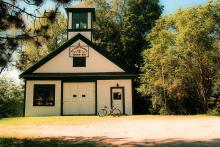Resiliency in a Decade-Long Fight to Get Better Broadband - Episode 453 of the Community Broadband Bits Podcast

This week on the podcast, Christopher talks with Belle Ryder, Orono, Maine Assistant Manager and President of the nonprofit OTO Fiber Corporation. The towns of Orono and nearby Old Town began their search for better broadband more than 10 years ago, and have overcome an array of challenges in bringing a pilot project to justify future-proof connectivity to the surrounding area.
Belle shares the origins of local efforts, and how the two communities kept finding themselves stuck with almost every solution too far out of reach. They were too small to entice private ISPs to commit to upgrading local infrastructure or invest in new construction that would bring fast connectivity to the region, but too small to finance a citywide network themselves. In looking for funding help, they found that existing options were considered too fast to qualify them for many opportunities to improve the technology in the ground. But residents were acutely aware that their broadband options were too slow to do more than the bare minimum to get online.
Christopher and Belle talk about the process of issuing multiple RFPs, working through a challenge by local cable providers, and how allies and local officials worked together to come up with a plan for financial stability and success. OTO Fiber's story is a testament to local resilience and resourcefulness in the face of obstacles and the value of never giving up.
This show is 47 minutes long and can be played on this page or via Apple Podcasts or the tool of your choice using this feed.
Transcript below.
We want your feedback and suggestions for the show-please e-mail us or leave a comment below.
Listen to other episodes here or view all episodes in our index. See other podcasts from the Institute for Local Self-Reliance here.
Thanks to Arne Huseby for the music. The song is Warm Duck Shuffle and is licensed under a Creative Commons Attribution (3.0) license.


